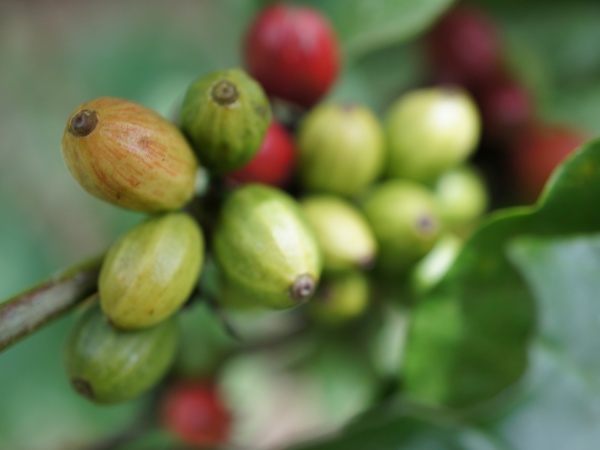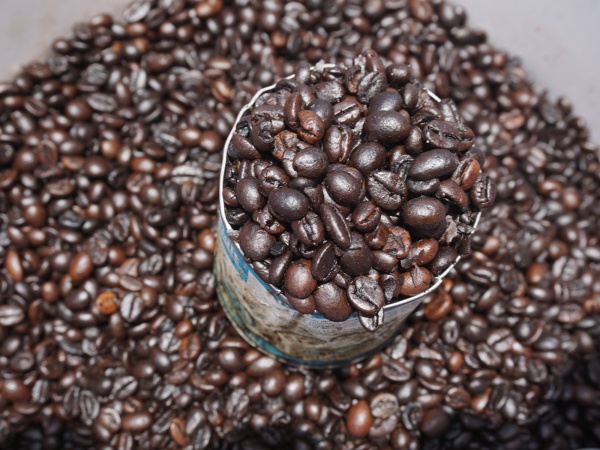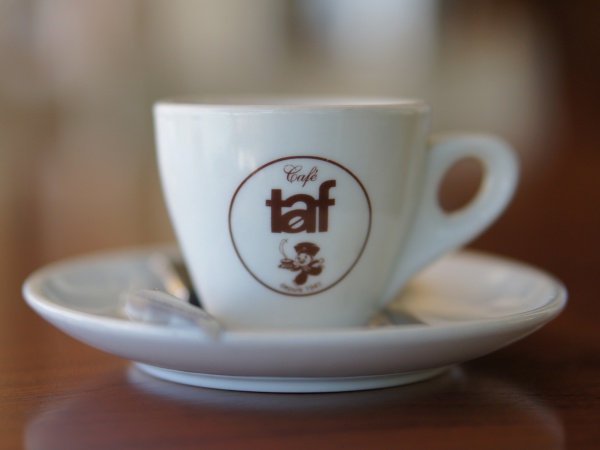Difference between revisions of "Madagascar Coffee"
CampMaster (talk | contribs) |
CampMaster (talk | contribs) |
||
| (11 intermediate revisions by 2 users not shown) | |||
| Line 1: | Line 1: | ||
| − | '''The two main coffee | + | '''The two main coffee plants found on Madagascar are Robusta and Arabica. Cultivation areas of Robusta can be found on the east coast, in the Vatovavy-Fitovinany region, around [[Tamatave]], [[Antalaha]], as well as in the northwest, on [[Nosy Be]] and along the [[Sambirano]] river.''' |
{| class="imageTable" | {| class="imageTable" | ||
| Line 11: | Line 11: | ||
|} | |} | ||
| − | Robusta grows in the lowlands, usually at altitudes between 100m and 300m. Madagascar's Robusta | + | <HTML5video type="youtube">WruIcT-NFj8</HTML5video> |
| + | |||
| + | <HTML5video type="youtube">68CCqMRCBQQ</HTML5video> | ||
| + | |||
| + | <HTML5video type="youtube">i4fGEyAJVKE</HTML5video> | ||
| + | |||
| + | <HTML5video type="youtube">pRlZ4IjNgIQ</HTML5video> | ||
| + | |||
| + | Robusta grows in the lowlands, usually at altitudes between 100m and 300m. Madagascar's Robusta Kouillou have a pronounced acidity and light body with a strong lasting finish, yet balanced and harmonious. While suitable for any roast level, a longer roasting or blend with Arabica may be ideal. | ||
[[File:Sambirano 006.jpg|600px]] | [[File:Sambirano 006.jpg|600px]] | ||
| − | Arabica | + | Arabica seedlings were brought to Madagascar in the beginning of the 19th century and is grown at higher altitudes in the central highlands, such as in the [[Antananarivo]] province and around [[Lake Alaotra]] on the northern central plateau in the Toamasina province. |
[[File:Madagascar Coffee 001.jpg|600px]] | [[File:Madagascar Coffee 001.jpg|600px]] | ||
| − | Only about 2% Arabica are cultivated but this is expected to increase. Additionally, there are about 50 wild coffee varieties with less caffeine contents which have not | + | Only about 2% Arabica are cultivated but this is expected to increase. Additionally, there are about 50 wild coffee varieties with less caffeine contents which have not been widely commercialised [http://www.priori.ch/das_Buch/39.htm]. |
[[File:Produits_TAF_Madagascar_014.jpg|600px]] | [[File:Produits_TAF_Madagascar_014.jpg|600px]] | ||
| Line 25: | Line 33: | ||
Almost all Madagascar's coffee plantations are owned by individual small family farm holders whose traditions and cultivation methods maintain biological diversity, which helps provide natural pest control, shade and organic nutrients. | Almost all Madagascar's coffee plantations are owned by individual small family farm holders whose traditions and cultivation methods maintain biological diversity, which helps provide natural pest control, shade and organic nutrients. | ||
| − | + | == Further information == | |
| − | |||
| − | |||
| − | |||
| − | |||
| − | |||
| − | |||
| − | |||
| − | |||
| − | |||
| − | |||
| − | |||
| − | |||
| − | |||
| − | |||
| − | |||
| − | |||
| − | |||
| − | |||
| − | |||
| − | + | * https://www.bradtguides.com/articles/coffee-culture-madagascar/ | |
| + | * https://homeroastcoffee.com/products/madagascar-robusta-organic-sc-14-fw-coffee-for-roasting | ||
| + | * https://www.kaffeezentrale.de/madagaskar | ||
| + | * http://bunaa.de/de/madagaskar/ | ||
| + | * http://www.ppafoundation.org/uploads/1/1/6/5/11653723/_company_profile_taf_2.pdf | ||
| + | * http://biodiversite-ecovalorisation-madagascar.e-monsite.com/medias/files/bec-english-version.pdf | ||
| − | View all [[Madagascar Coffee photos]] | + | * View all [[Madagascar Coffee photos]] |
Latest revision as of 12:03, 13 December 2021
The two main coffee plants found on Madagascar are Robusta and Arabica. Cultivation areas of Robusta can be found on the east coast, in the Vatovavy-Fitovinany region, around Tamatave, Antalaha, as well as in the northwest, on Nosy Be and along the Sambirano river.

| ||
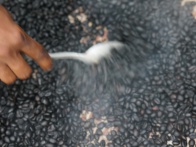
|
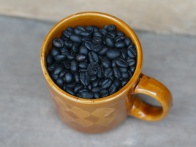
|

|
Robusta grows in the lowlands, usually at altitudes between 100m and 300m. Madagascar's Robusta Kouillou have a pronounced acidity and light body with a strong lasting finish, yet balanced and harmonious. While suitable for any roast level, a longer roasting or blend with Arabica may be ideal.
Arabica seedlings were brought to Madagascar in the beginning of the 19th century and is grown at higher altitudes in the central highlands, such as in the Antananarivo province and around Lake Alaotra on the northern central plateau in the Toamasina province.
Only about 2% Arabica are cultivated but this is expected to increase. Additionally, there are about 50 wild coffee varieties with less caffeine contents which have not been widely commercialised [1].
Almost all Madagascar's coffee plantations are owned by individual small family farm holders whose traditions and cultivation methods maintain biological diversity, which helps provide natural pest control, shade and organic nutrients.
Further information
- https://www.bradtguides.com/articles/coffee-culture-madagascar/
- https://homeroastcoffee.com/products/madagascar-robusta-organic-sc-14-fw-coffee-for-roasting
- https://www.kaffeezentrale.de/madagaskar
- http://bunaa.de/de/madagaskar/
- http://www.ppafoundation.org/uploads/1/1/6/5/11653723/_company_profile_taf_2.pdf
- http://biodiversite-ecovalorisation-madagascar.e-monsite.com/medias/files/bec-english-version.pdf
- View all Madagascar Coffee photos
